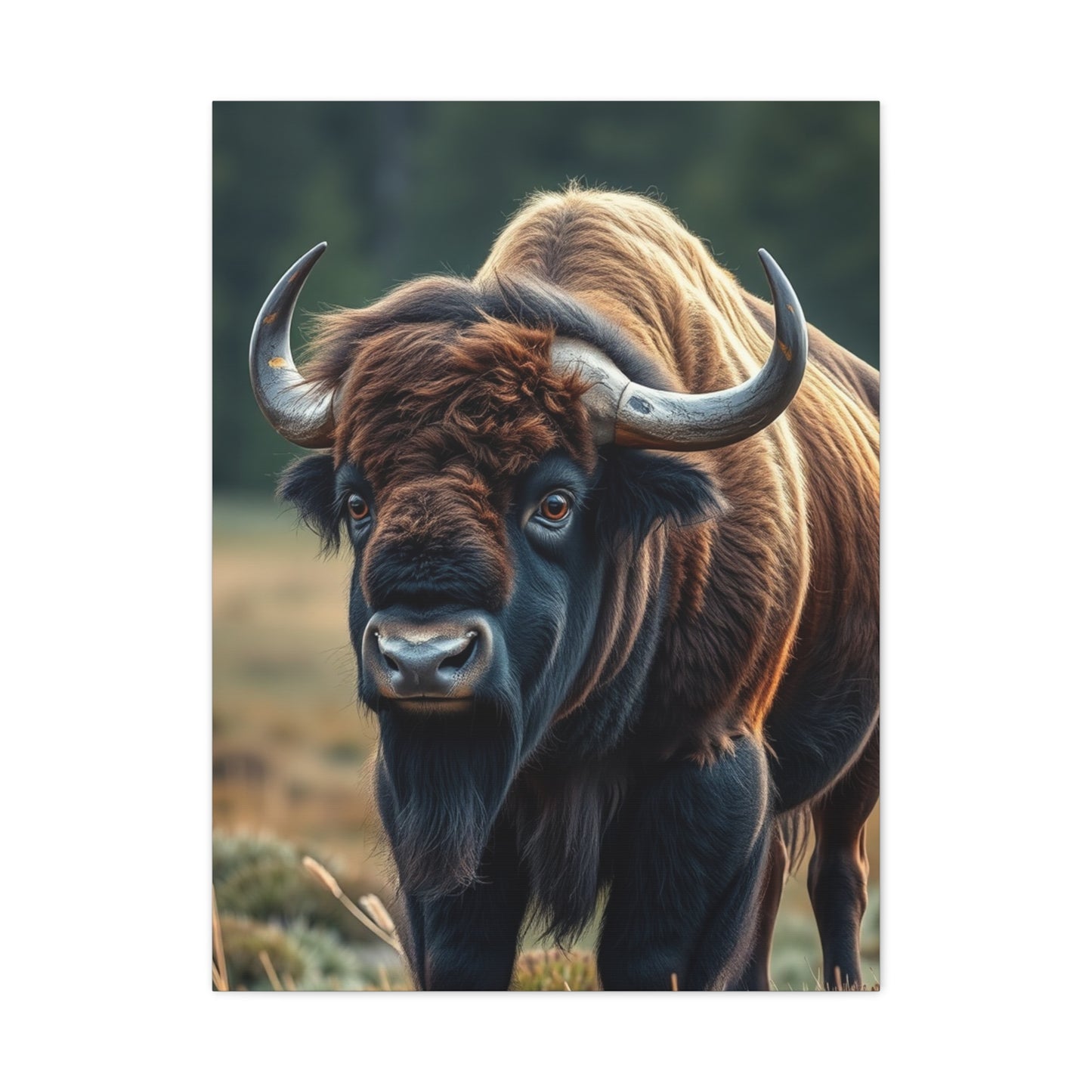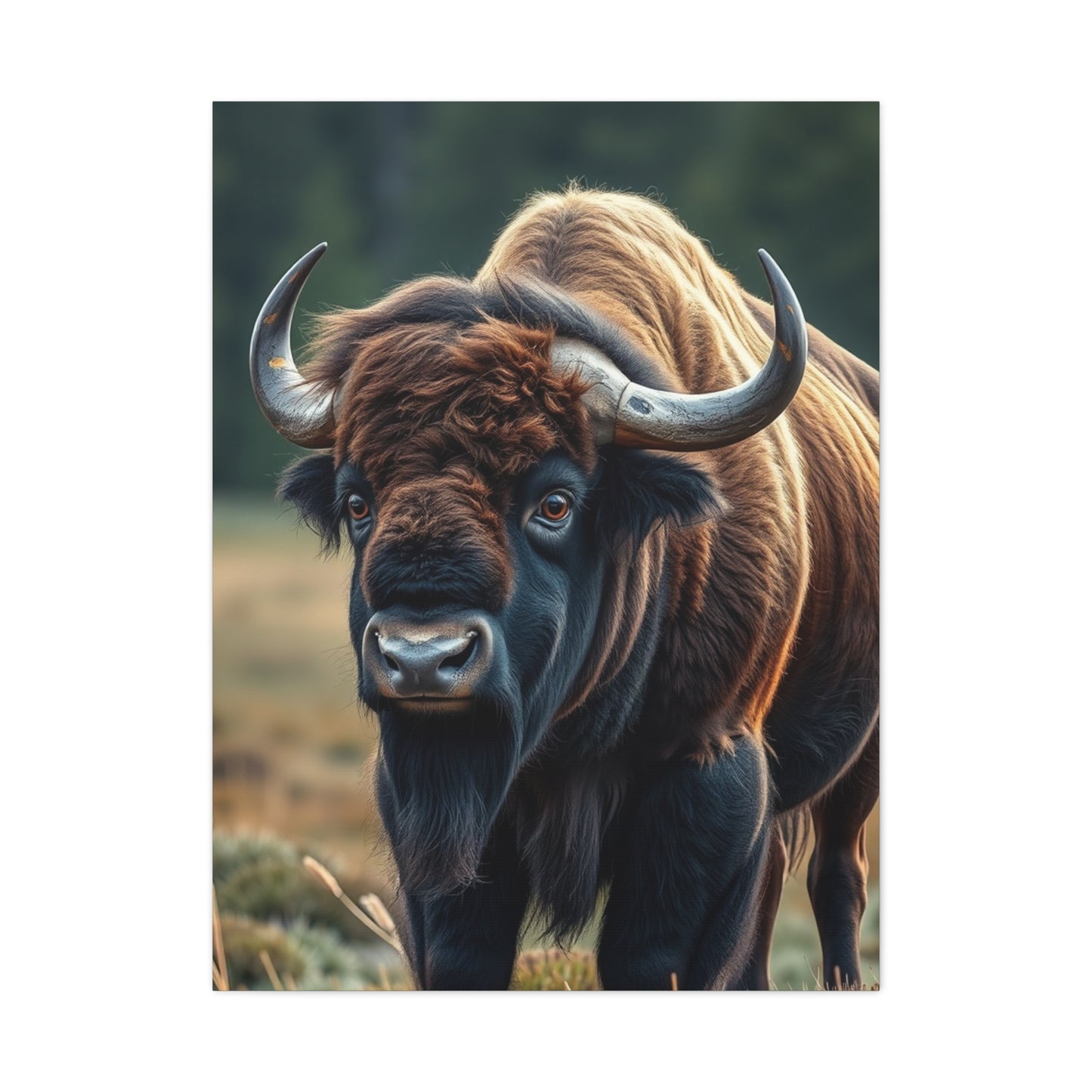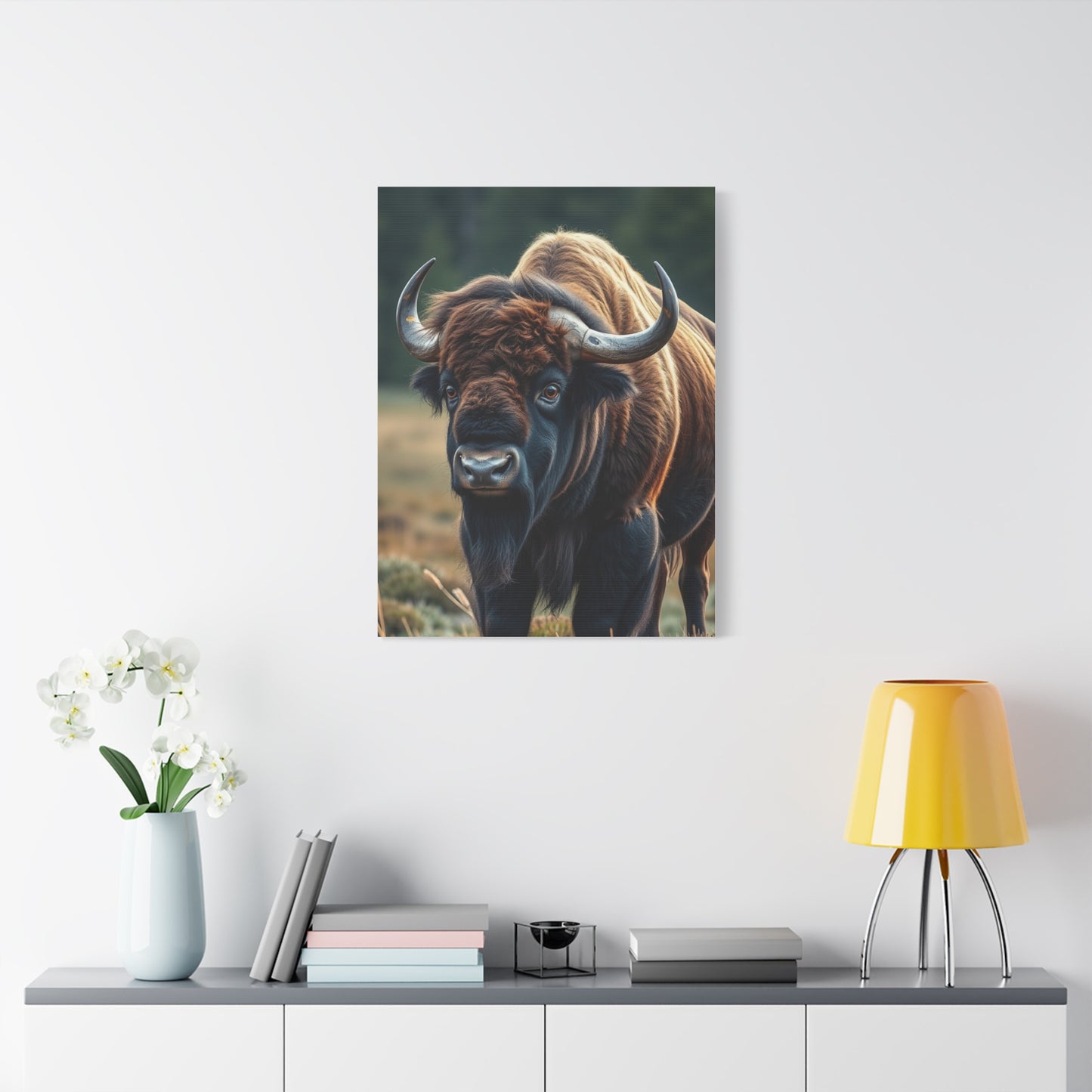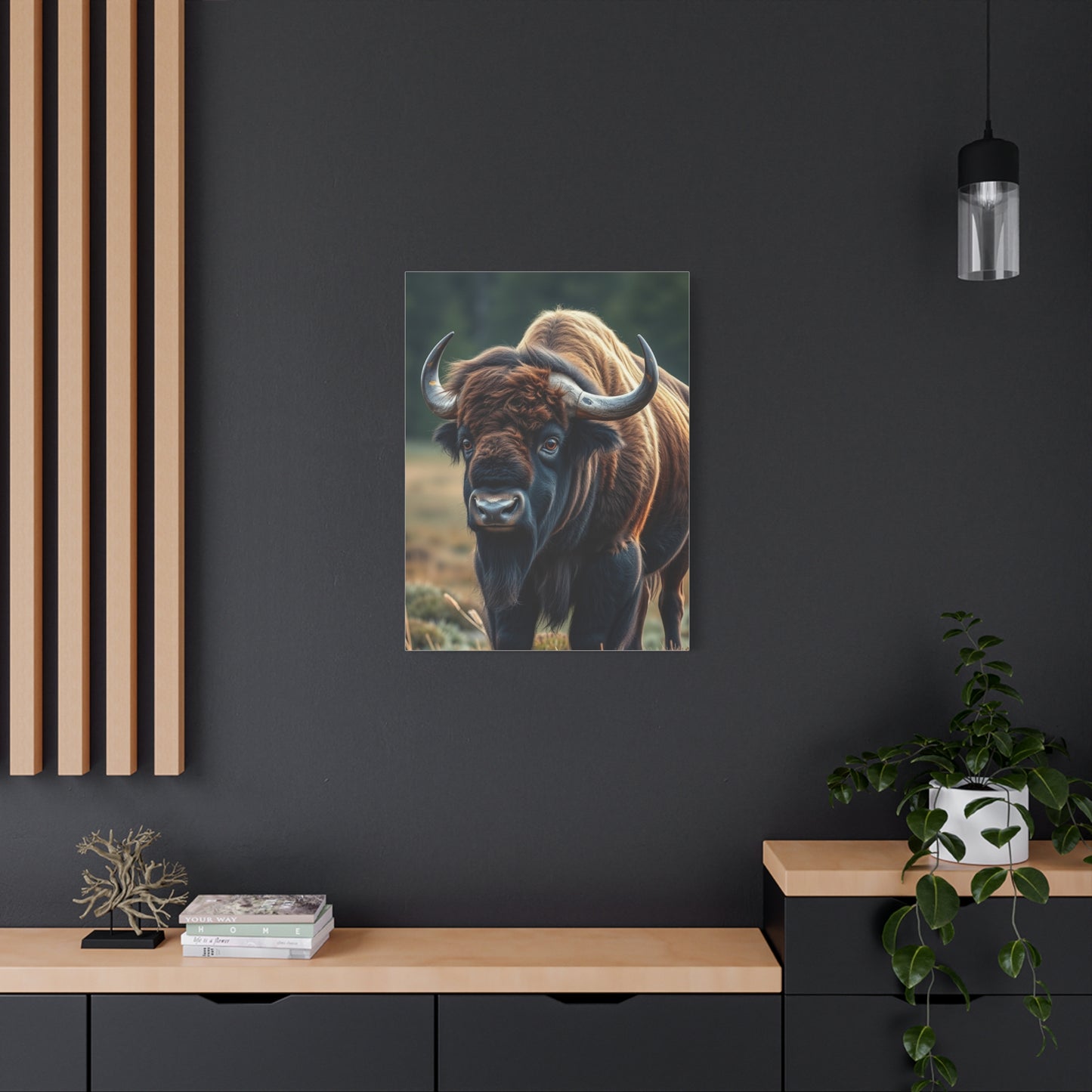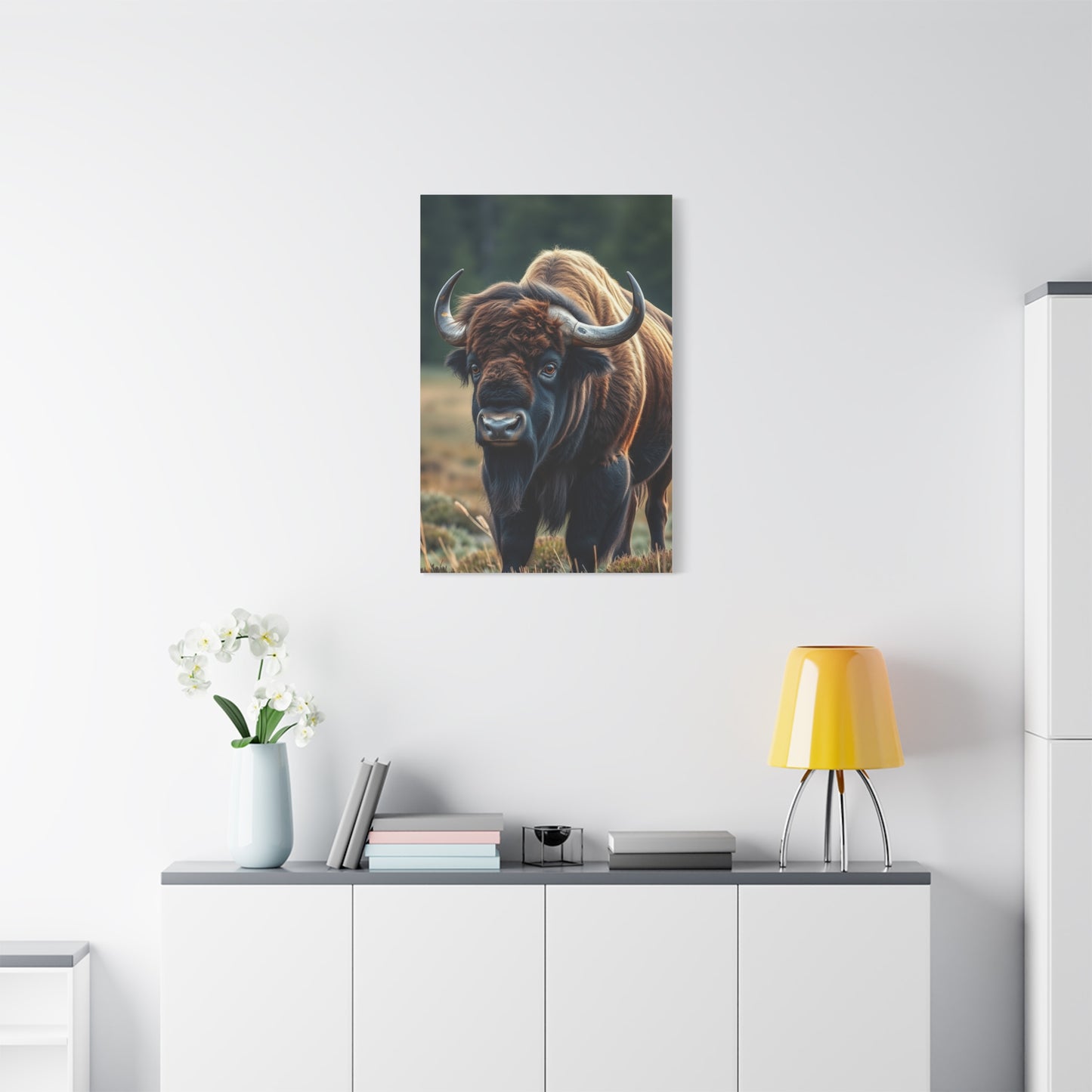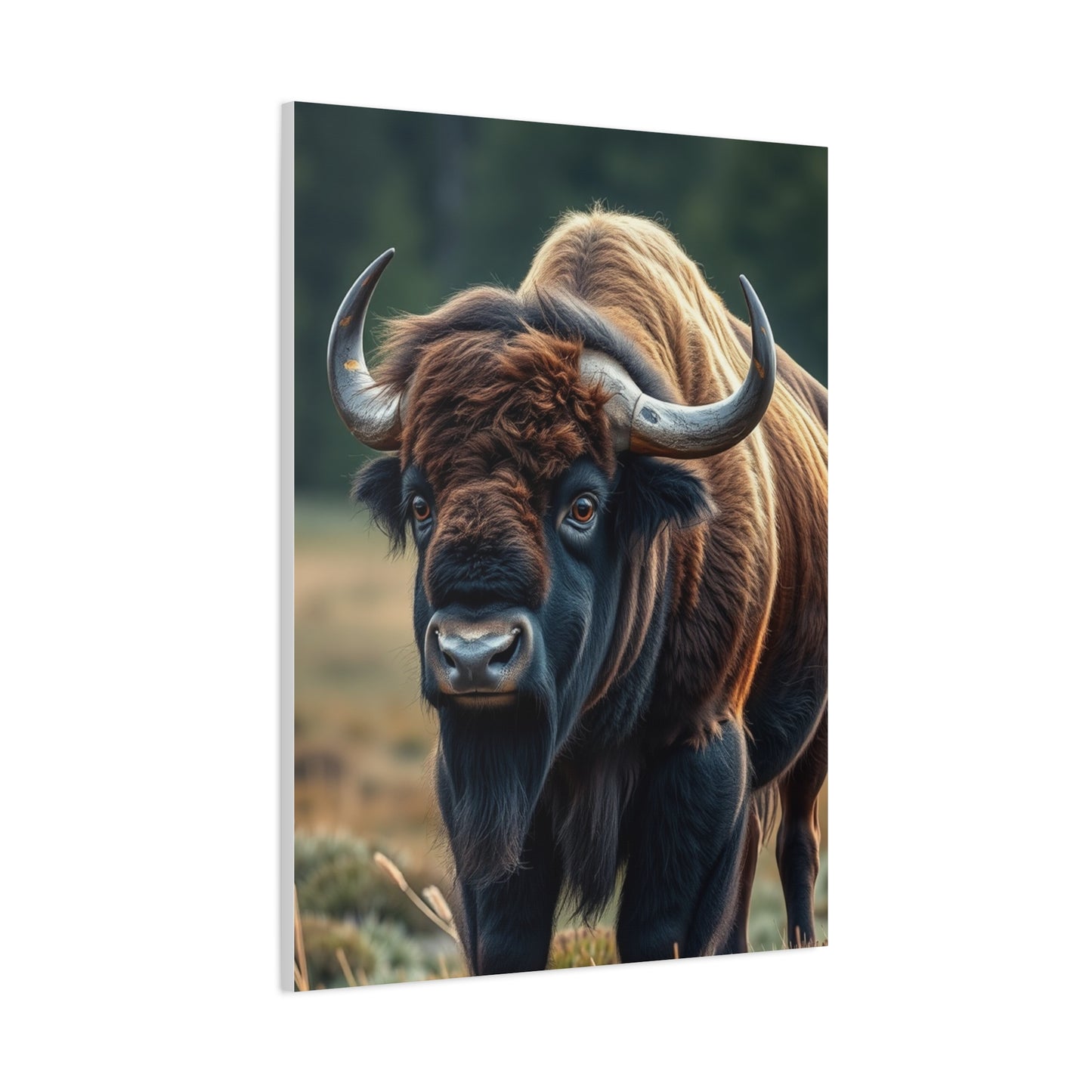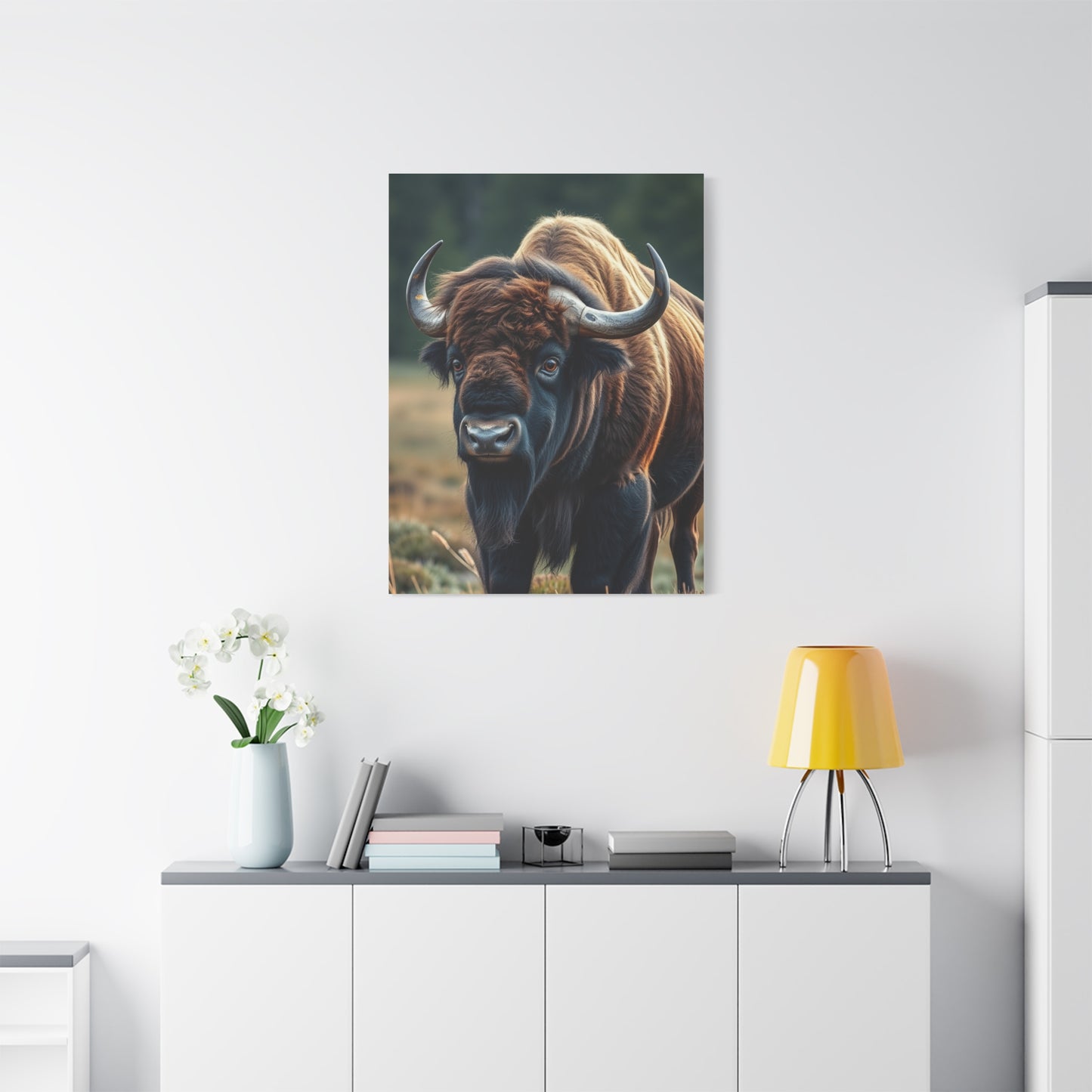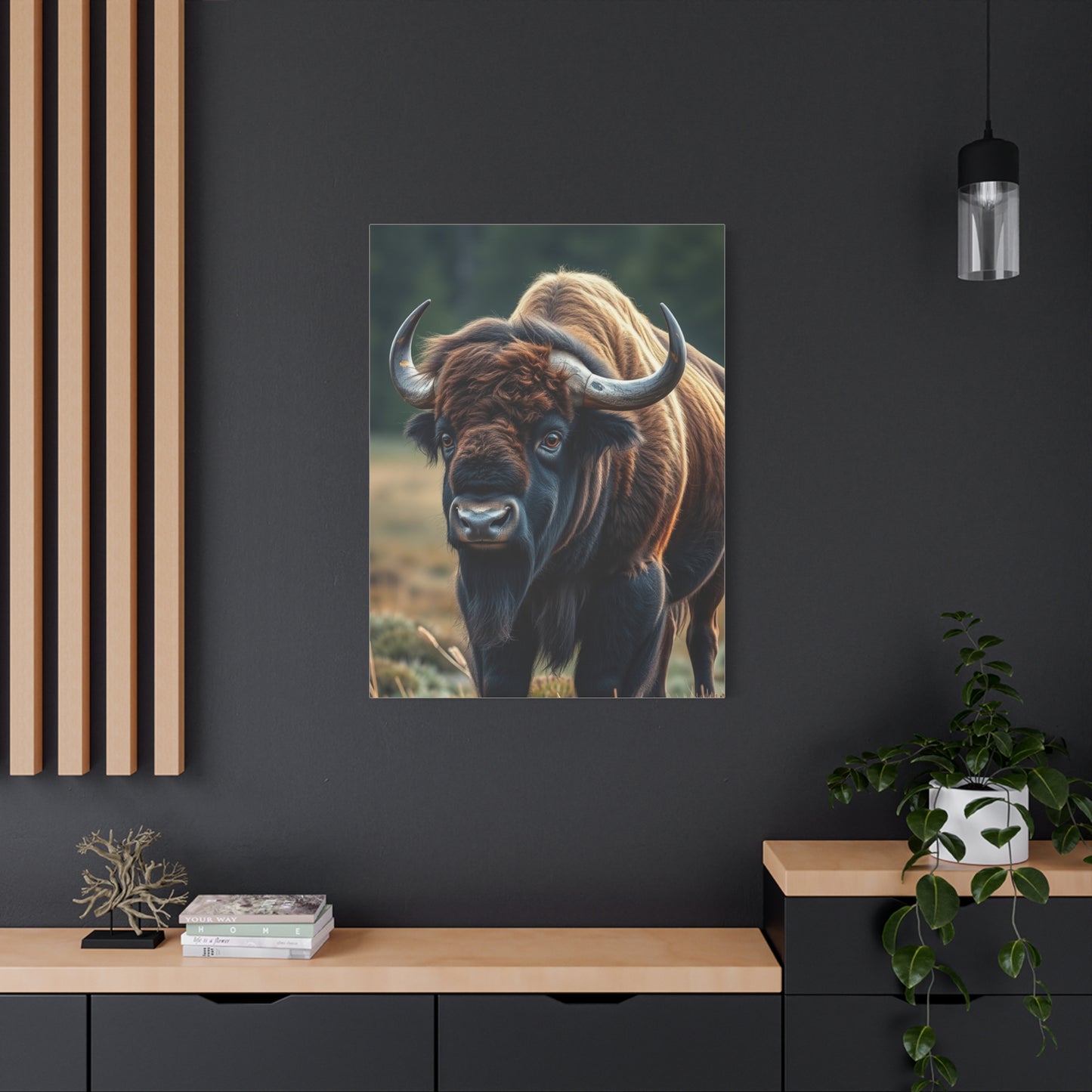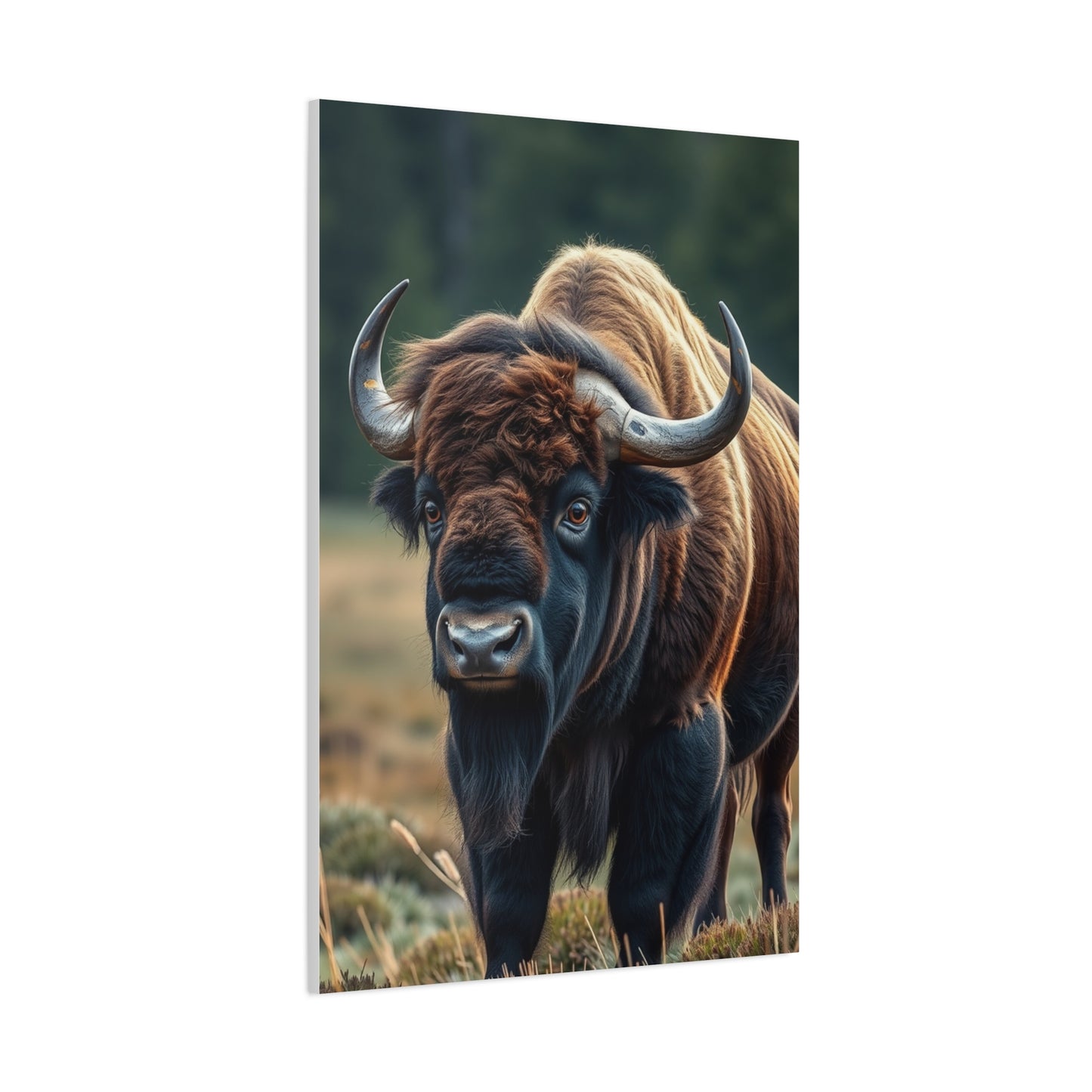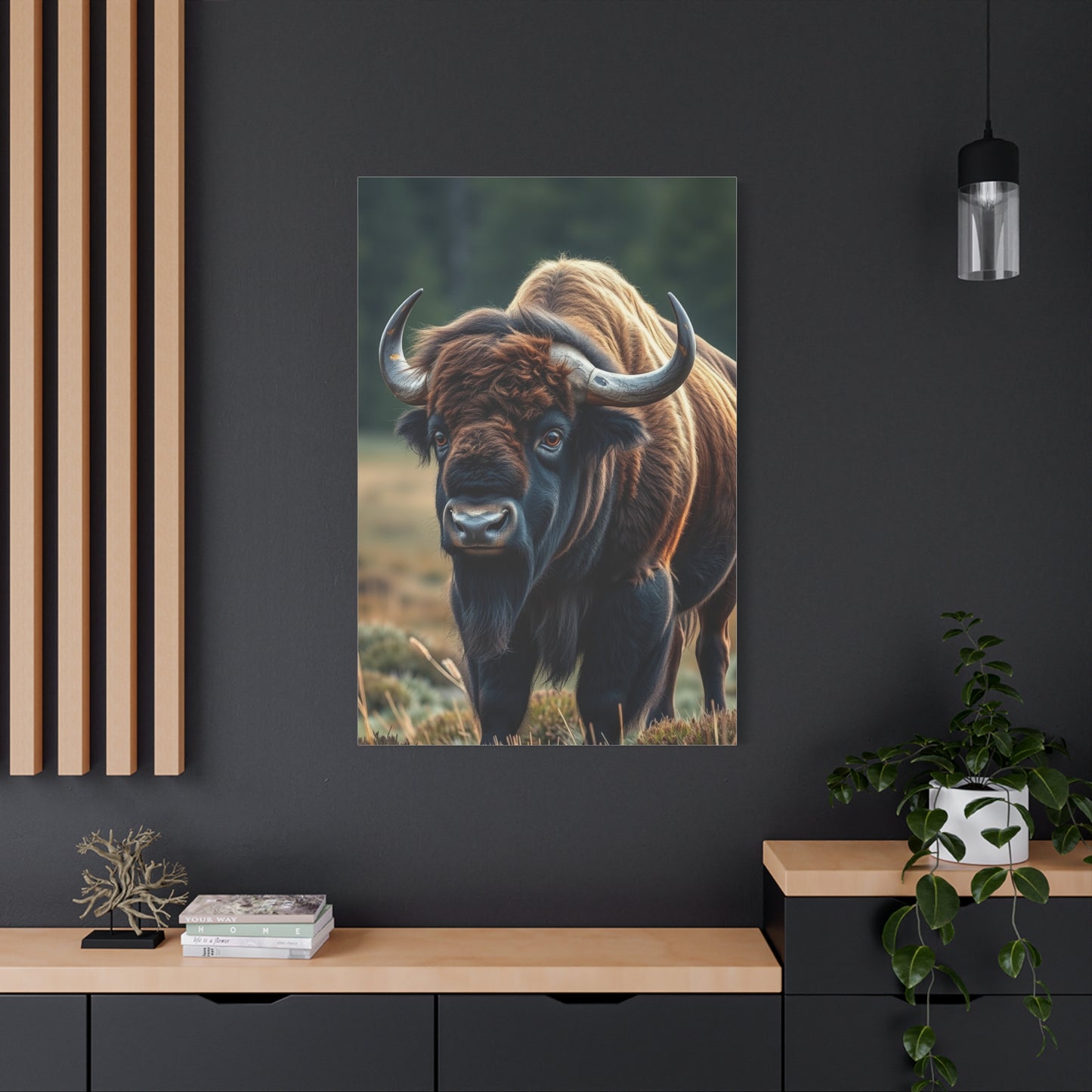Regal Plains Portraiture Wall Art: Capturing Noble Landscapes and Majestic Prairie Vistas
The vast expanse of plains represents one of nature's most compelling and serene environments, offering endless horizons that speak to the human soul. Plains wall art has emerged as a sophisticated choice for those seeking to bring the tranquil beauty and regal essence of these landscapes into their homes and workplaces. These artistic representations capture the noble character of open terrains, showcasing everything from rolling grasslands to expansive prairies that stretch beyond the visible horizon.
The appeal of plains-themed artwork lies in its ability to evoke feelings of freedom, peace, and connection to the natural world. Unlike mountainous or coastal scenes that can feel overwhelming or dramatic, plains imagery offers a sense of calm sophistication that complements various decorative styles. Whether rendered in traditional oil paintings, contemporary photography, or modern digital art, these pieces transform ordinary rooms into havens of tranquility.
Contemporary artists and photographers have developed remarkable techniques for capturing the subtle beauty of plains environments. Through careful attention to lighting, composition, and atmospheric conditions, they create works that showcase the ever-changing moods of these landscapes. From the golden hour when grasslands shimmer in warm light to the dramatic moments when storm clouds gather across infinite skies, plains wall art celebrates the dynamic yet peaceful nature of these environments.
The popularity of plains-themed artwork reflects a broader cultural appreciation for minimalism and natural beauty. In our increasingly urbanized world, these images serve as windows to simpler times and places, offering viewers a chance to mentally escape to wide-open territories where the pace of life moves more slowly. This connection to rural landscapes and agricultural heritage resonates with people seeking authenticity and grounding in their living environments.
Plains Elegance on Canvas: Masterful Techniques and Artistic Excellence
Canvas remains the preferred medium for many artists creating plains-inspired artwork, offering the perfect surface for capturing the subtle textures and expansive views that define these landscapes. The technique of painting plains on canvas requires exceptional skill in rendering vast distances, atmospheric perspective, and the delicate interplay between earth and sky that characterizes these environments.
Master painters working with plains subjects often employ sophisticated color palettes that reflect the seasonal variations of grasslands and prairies. Spring paintings might feature fresh greens and soft pastels, while autumn works showcase golden ambers and russet tones that mirror the natural cycle of grass and grain. Winter scenes present unique challenges and opportunities, with artists capturing the stark beauty of snow-covered fields and the dramatic contrast between white landscapes and grey skies.
The brushwork technique for plains paintings differs significantly from other landscape styles. Artists must master the art of suggesting texture without overwhelming detail, creating the impression of endless grass movement through carefully placed strokes. The sky typically occupies a significant portion of the canvas, requiring expertise in cloud formation, light diffusion, and atmospheric effects that give depth and dimension to these wide-open compositions.
Contemporary canvas artists working with plains themes often incorporate mixed media techniques, combining traditional oil or acrylic paints with pastels, charcoal, or even digital elements. This approach allows for greater textural variety and can create more dynamic visual effects that capture the ephemeral qualities of light and weather across open landscapes.
The framing and presentation of plains canvas art requires careful consideration to maintain the sense of openness and freedom that these landscapes represent. Many collectors prefer minimal, understated frames that don't compete with the artwork itself, allowing the painted horizon to extend visually beyond the physical boundaries of the canvas. Gallery wrapping techniques, where the painting extends around the sides of the canvas, have become increasingly popular for plains artwork as they eliminate visual barriers and enhance the immersive quality of the piece.
Color theory plays a crucial role in effective plains canvas art. Artists must understand how atmospheric conditions affect color perception across long distances, incorporating subtle shifts in hue and saturation that create convincing depth. The phenomenon known as atmospheric perspective becomes particularly important in plains paintings, where distant elements appear lighter and less saturated than foreground details.
Portraits of Noble Landscapes: Capturing Character in Open Terrain
The concept of landscape portraiture brings an intimate, personal quality to plains artwork that goes beyond simple documentation of scenery. Like traditional portraiture aims to capture the essence and character of its human subjects, landscape portraits of plains environments seek to reveal the unique personality and spirit of specific locations and moments in time.
Photographic portraits of plains landscapes require exceptional timing and patience, as these environments can appear deceptively simple to the untrained eye. Professional photographers specializing in plains imagery often spend considerable time in specific locations, returning repeatedly to capture the perfect combination of lighting, weather conditions, and seasonal elements that reveal the true character of the landscape.
The technical aspects of creating compelling plains portraits involve sophisticated understanding of composition, depth of field, and exposure techniques. Many photographers employ wide-angle lenses to emphasize the vastness of these environments while using foreground elements like wildflowers, fence posts, or distinctive rock formations to provide scale and visual interest. The challenge lies in creating compelling compositions within environments that lack obvious focal points or dramatic features.
Digital processing techniques have revolutionized the creation of plains landscape portraits, allowing photographers to enhance subtle details and atmospheric effects that might be lost in straight camera captures. However, the most successful artists maintain a delicate balance, using technology to strengthen rather than overwhelm the natural beauty of their subjects. Color grading, contrast adjustments, and selective sharpening can bring out the inherent drama in seemingly quiet scenes.
The emotional impact of landscape portraits stems from their ability to capture fleeting moments and moods that viewers might otherwise overlook. A skilled photographer can reveal the drama in an approaching storm, the serenity of morning mist rising from grasslands, or the melancholy beauty of abandoned farmsteads silhouetted against endless horizons. These images function as emotional documents, preserving not just the visual appearance of places but their atmospheric and spiritual qualities.
Seasonal variations provide rich opportunities for creating diverse landscape portraits within the same geographic areas. The same stretch of prairie that appears golden and abundant in late summer might transform into a stark, minimalist composition in winter, offering completely different emotional and aesthetic experiences. This seasonal versatility makes plains landscape portraits particularly valuable for collectors who appreciate the changing character of natural environments.
The printing and display of landscape portraits requires careful attention to maintain the integrity of color, contrast, and detail that define these works. High-quality papers, archival inks, and professional printing techniques ensure that the subtle gradations and atmospheric effects captured by the artist are faithfully reproduced for long-term display and enjoyment.
Regal Views of the Wild Plains: Majesty in Simplicity
The term "regal" perfectly describes the dignified beauty found in wild plains environments, where nature displays its grandeur through vastness rather than dramatic peaks or crashing waves. These landscapes possess an understated majesty that speaks to viewers on a profound level, offering perspectives that inspire contemplation and respect for the natural world.
Wild plains differ significantly from cultivated agricultural lands in their artistic representation and emotional impact. Untamed grasslands, native prairie remnants, and preserved wilderness areas retain an authenticity and wildness that resonates with contemporary audiences seeking connection to unspoiled natural environments. Artists working with these subjects often emphasize the untouched quality of their locations, highlighting the resilience and timeless character of native ecosystems.
The wildlife that inhabits wild plains adds another dimension to artistic representations of these environments. Herds of buffalo, elk, or deer moving across open grasslands create dynamic compositions that celebrate both the landscape and its native inhabitants. Birds of prey soaring above endless terrain or small creatures like prairie dogs in their natural habitat provide scale and narrative elements that enhance the overall impact of the artwork.
Botanical diversity within wild plains offers artists rich opportunities for detailed studies and broader landscape compositions. Native grasses, wildflowers, and distinctive plant species create seasonal displays that transform the appearance and mood of these environments throughout the year. Spring brings waves of colorful blooms, summer showcases the full majesty of mature grasslands, autumn provides spectacular color changes, and winter reveals the architectural beauty of dormant vegetation.
The conservation message inherent in wild plains artwork has become increasingly important as these ecosystems face ongoing threats from development and climate change. Many contemporary artists view their work as both aesthetic expression and environmental advocacy, using their platforms to raise awareness about the importance of preserving remaining wild prairie and grassland habitats.
Light conditions in wild plains environments can create spectacular visual effects that artists strive to capture and interpret. The lack of visual obstructions allows for dramatic sunrise and sunset displays, with colors reflecting off grasslands and cloud formations in ways unique to these open environments. Storm systems approaching across vast distances provide opportunities for capturing nature's power and drama in compositions that emphasize both beauty and natural forces.
The meditative quality of wild plains has attracted artists seeking to explore themes of solitude, contemplation, and spiritual connection to nature. These environments offer perfect subjects for artwork intended to create peaceful, restorative atmospheres in residential and commercial settings. The psychological benefits of viewing plains imagery include stress reduction, improved focus, and enhanced sense of well-being.
Noble Plains in Fine Art: Elevating Landscape Traditions
The elevation of plains landscapes to fine art status represents a significant shift in artistic appreciation and market recognition. Historically, mountainous and coastal scenes dominated landscape painting traditions, but contemporary fine artists have discovered the sophisticated aesthetic possibilities inherent in plains environments, creating works that command respect in galleries and museums worldwide.
Fine art approaches to plains imagery often emphasize conceptual and emotional elements over simple documentation. Artists may use plains landscapes as metaphors for human experiences, exploring themes of isolation, freedom, journey, or spiritual seeking through their depictions of vast open territories. This conceptual depth transforms simple landscape paintings into complex artistic statements that engage viewers on multiple levels.
The technical demands of creating fine art plains landscapes require mastery of subtle color relationships, atmospheric effects, and compositional strategies that can create compelling visual experiences within seemingly simple subject matter. Artists must develop heightened sensitivity to light, weather, and seasonal variations that reveal the dramatic potential within these quiet environments.
Contemporary fine artists working with plains themes often incorporate innovative techniques and materials that push beyond traditional landscape painting conventions. Mixed media approaches might combine painting with collage elements, incorporating actual grass, soil, or other natural materials into the artwork. Digital techniques allow for experimental color treatments and compositional manipulations that reveal new ways of seeing familiar landscapes.
The market for fine art plains landscapes has grown significantly as collectors recognize the investment potential and aesthetic value of well-executed works in this genre. Gallery representation, museum acquisitions, and competitive exhibition opportunities have established plains landscape painting as a legitimate and valuable fine art category.
Academic institutions and art schools now offer specialized courses in landscape painting that include significant focus on plains and prairie environments. This educational emphasis ensures continued development of artistic skills and techniques specific to these subjects while fostering new generations of artists who appreciate the aesthetic possibilities of open terrain.
The critical reception of plains fine art has evolved from initial dismissal as "boring" or "empty" to sophisticated appreciation for the subtle complexities and emotional depths these works can achieve. Art critics and historians now recognize the unique challenges and achievements represented by successful plains landscape paintings, acknowledging their contribution to broader landscape painting traditions.
Canvas Prints of Majestic Terrain: Quality and Reproduction Excellence
The reproduction of plains artwork as high-quality canvas prints has democratized access to this beautiful art form, allowing broader audiences to enjoy professional-level imagery in their homes and offices. Modern printing technologies have reached levels of quality that can faithfully reproduce the subtle color gradations and atmospheric effects that define excellent plains artwork.
Giclee printing techniques using archival inks on premium canvas materials ensure longevity and color accuracy that meets museum standards for fine art reproduction. These prints can capture the finest details of brush strokes, photographic textures, and color nuances that are essential to the impact of plains artwork. The canvas substrate adds texture and dimension that enhances the viewing experience compared to traditional paper prints.
The sizing options available for canvas prints allow collectors to choose proportions that best suit their display needs while maintaining the integrity of the original artwork composition. Large-format prints can recreate the immersive experience of viewing vast plains landscapes, while smaller sizes work well for intimate settings where subtle beauty is appreciated at closer range.
Gallery wrap finishing techniques eliminate the need for traditional framing while creating clean, contemporary presentations that complement modern decorating styles. The printed image extends around the edges of the canvas, creating a three-dimensional effect that enhances the sense of depth and openness characteristic of plains landscapes.
Custom printing services can work with collectors to adjust color balance, contrast, and sizing to suit specific display conditions and personal preferences. This flexibility ensures that each canvas print achieves its maximum visual impact in its intended environment, whether that's a bright office setting or a dimly lit residential room.
The durability of modern canvas prints makes them suitable for various environmental conditions, though proper care and placement away from direct sunlight and moisture will ensure decades of enjoyment. UV-resistant coatings and fade-resistant inks protect against common causes of deterioration that might affect less sophisticated reproduction methods.
Limited edition canvas prints offer collectors the opportunity to own reproductions with enhanced exclusivity and potential investment value. These editions typically feature enhanced printing techniques, special papers or canvas materials, and artist or publisher authentication that distinguishes them from unlimited reproduction runs.
Portraiture of the Regal Frontier: Historical and Contemporary Perspectives
The concept of the frontier holds special significance in American cultural history, and artistic portrayals of frontier plains landscapes carry deep symbolic meaning related to exploration, opportunity, and national identity. Contemporary artists working within this tradition must balance historical appreciation with modern artistic sensibilities to create works that speak to contemporary audiences while honoring cultural heritage.
Historical frontier imagery typically emphasized the challenges and opportunities presented by vast unexplored territories. Early artists documented these landscapes as both obstacles to overcome and promises of future prosperity. Modern interpretations often take more nuanced approaches, acknowledging both the beauty of these environments and the complex cultural history associated with frontier expansion.
The portrayal of frontier plains requires sensitivity to diverse cultural perspectives, particularly regarding Native American historical connections to these lands. Many contemporary artists strive to create works that celebrate the beauty of plains landscapes while acknowledging their cultural significance to indigenous peoples who lived in harmony with these environments for thousands of years.
Architectural elements from frontier periods, including abandoned homesteads, old barns, windmills, and fence lines, provide compelling focal points for contemporary plains artwork. These human-made features serve as reminders of historical settlement patterns while creating visual anchors within expansive landscape compositions.
The romanticism associated with frontier imagery continues to appeal to modern audiences seeking connection to simpler times and places. However, contemporary artists often temper this romanticism with more realistic portrayals that acknowledge both the beauty and hardships associated with frontier life on the plains.
Documentary photography projects focusing on remaining frontier landscapes and structures serve important historical preservation functions while creating compelling artistic works. These projects often combine historical research with contemporary photographic techniques to create comprehensive visual records of disappearing cultural landscapes.
The interpretation of frontier themes in contemporary art often addresses current environmental and social issues affecting plains regions. Climate change, agricultural challenges, rural population decline, and conservation efforts provide rich thematic material for artists seeking to connect historical subjects with contemporary relevance.
Serene Plains, Royal Essence: Peaceful Majesty in Natural Settings
The inherent serenity of plains landscapes creates unique opportunities for artwork intended to promote relaxation, meditation, and emotional well-being. These environments possess a natural majesty that doesn't rely on dramatic features or overwhelming scale, instead offering viewers peaceful contemplation and mental restoration through their quiet beauty and expansive horizons.
Color psychology plays an important role in creating serene plains artwork, with artists carefully selecting palettes that promote feelings of calm and tranquility. Soft greens, gentle blues, warm earth tones, and muted pastels work together to create harmonious compositions that soothe rather than stimulate viewers. The absence of harsh contrasts or jarring color combinations maintains the peaceful atmosphere these works are designed to create.
The compositional strategies used in serene plains artwork often emphasize horizontal lines, gentle curves, and balanced proportions that create visual stability and order. Avoiding dramatic diagonals or chaotic elements helps maintain the meditative quality that makes these works particularly suitable for environments where stress reduction and mental clarity are priorities.
Seasonal representations of serene plains each offer unique emotional qualities and visual characteristics. Spring scenes might feature fresh growth and gentle colors that suggest renewal and hope. Summer compositions could showcase abundant vegetation and clear skies that convey prosperity and contentment. Autumn works might emphasize golden colors and harvest imagery that speak to fulfillment and gratitude. Winter scenes can capture the quiet beauty of dormant landscapes and the peaceful solitude of snow-covered fields.
The therapeutic benefits of viewing serene plains artwork have been recognized in healthcare, workplace, and residential settings where stress reduction and emotional well-being are important considerations. These images can serve as visual escapes that allow viewers to mentally transport themselves to peaceful natural environments even when physically confined to urban or institutional settings.
The creation of serene plains artwork often requires artists to spend extended periods in these environments, developing deep familiarity with their subtle moods and characteristics. This intimate knowledge allows artists to select and emphasize the specific qualities that contribute most effectively to the peaceful impact of their finished works.
Professional applications for serene plains artwork include medical offices, counseling centers, spas, hotels, and other commercial settings where creating calming atmospheres contributes to business success. The universal appeal and non-controversial nature of these subjects makes them particularly suitable for public and professional display contexts.
Regal Portraits of Open Skies: Celestial Drama Above the Horizon
The expansive skies that dominate plains landscapes offer artists exceptional opportunities to capture celestial drama and atmospheric beauty that would be obscured or diminished in more topographically complex environments. These open sky compositions can showcase weather systems, cloud formations, and light phenomena with clarity and impact impossible in other landscape settings.
Cloud study and representation requires sophisticated understanding of atmospheric physics and weather patterns that affect plains regions. Different cloud types create distinct moods and visual effects, from the gentle beauty of scattered cumulus clouds to the dramatic power of approaching thunderstorms. Artists specializing in plains skies often develop expertise in meteorology that enhances the authenticity and impact of their work.
The proportion of sky to land in plains compositions significantly affects the emotional impact and visual balance of the finished artwork. Compositions that emphasize sky elements can create feelings of freedom and transcendence, while those that balance sky and land more equally might feel more grounded and stable. Artists must carefully consider these proportional relationships to achieve their intended artistic effects.
Sunrise and sunset phenomena appear with particular intensity and beauty in plains environments where atmospheric pollution and visual obstructions are minimal. The clear air and unobstructed horizons allow for spectacular color displays that can last for extended periods, providing artists with rich material for dramatic sky compositions.
Seasonal variations in sky quality and characteristics provide ongoing inspiration for artists working with plains subjects. Spring skies might feature dramatic storm systems and rapidly changing conditions. Summer often brings clear, stable conditions with distinctive cumulus cloud formations. Autumn skies can display exceptional clarity and color intensity. Winter conditions create unique atmospheric effects and color palettes that differ markedly from other seasons.
The technical challenges of painting or photographing dramatic skies require mastery of color mixing, gradation techniques, and timing considerations that separate amateur efforts from professional quality work. Digital artists working with sky imagery must understand both the technical capabilities of their tools and the natural phenomena they're attempting to reproduce.
Night sky imagery over plains environments offers additional artistic opportunities, with minimal light pollution allowing for clear views of stars, moon phases, and celestial events. These compositions can create particularly dramatic and romantic effects that appeal to viewers seeking connection to cosmic scales and natural rhythms.
Plains-Inspired Wall Elegance: Sophisticated Decorating Applications
The integration of plains-themed artwork into sophisticated decorating schemes requires understanding of how these images interact with architectural elements, color schemes, furniture styles, and lighting conditions. When properly selected and displayed, plains wall art can elevate the aesthetic quality of any environment while creating atmospheres of refined tranquility and natural beauty.
Color coordination between plains artwork and existing decorating elements requires careful attention to undertones, saturation levels, and temperature relationships that create harmonious rather than competing visual effects. Neutral color palettes often work best with plains imagery, allowing the subtle colors and atmospheric effects in the artwork to serve as focal points without clashing with other decorative elements.
The scale and proportion of plains artwork relative to wall dimensions and surrounding furnishings significantly affects the overall visual impact and success of the installation. Large-scale pieces can create dramatic focal points and enhance the sense of openness characteristic of plains landscapes, while smaller works might be more appropriate for intimate settings or as part of gallery wall arrangements.
Lighting design plays a crucial role in displaying plains artwork effectively, with both natural and artificial light sources affecting how colors and details appear throughout the day. Track lighting, picture lights, or strategically placed lamps can enhance the visibility and impact of plains artwork while avoiding glare or uneven illumination that might detract from the viewing experience.
The selection of complementary decorative accessories and furnishing styles can reinforce the natural themes and peaceful atmosphere created by plains wall art. Natural materials like wood, stone, and fiber complement the organic qualities of plains imagery, while clean-lined contemporary furniture styles avoid competing with the simplified forms characteristic of these landscapes.
Professional design consultations can help collectors select and arrange plains artwork in ways that maximize its decorative and emotional impact while ensuring long-term satisfaction with the installation. Design professionals understand how artwork interacts with architectural features, traffic patterns, and viewing angles that affect the overall success of decorative schemes.
The versatility of plains artwork makes it suitable for various decorating styles, from traditional country themes to ultra-modern minimalist approaches. The key lies in selecting specific pieces and presentation methods that complement rather than contradict the overall design philosophy of each particular setting.
Artistic Tribute to the Plains: Cultural and Historical Significance
Plains landscapes hold profound cultural significance in American history and identity, serving as symbols of opportunity, freedom, and connection to the natural world. Artistic tributes to these environments often carry deeper meanings related to national heritage, environmental conservation, and cultural values that extend beyond simple aesthetic appreciation.
The documentation of changing plains landscapes serves important historical and environmental functions, preserving visual records of how these environments have evolved under human influence and natural processes. Many contemporary artists view their work as contributions to ongoing cultural and scientific understanding of these important ecosystems and their role in broader environmental systems.
Regional artistic traditions have developed around plains landscapes, with different geographic areas producing distinctive styles and approaches that reflect local cultural influences and environmental characteristics. Texas plains art might emphasize different color palettes and vegetation than work produced in Minnesota or Montana, creating regional variations within the broader category of plains landscape art.
The influence of plains imagery on American art movements, including Hudson River School painting, American Impressionism, and contemporary environmental art, demonstrates the ongoing cultural importance of these landscapes in artistic expression. Understanding these historical connections enhances appreciation for contemporary works that continue and expand upon these traditions.
Native American artistic traditions related to plains environments provide important cultural context for contemporary works dealing with these subjects. Many modern artists seek to honor and acknowledge indigenous connections to these lands while creating their own contemporary interpretations that respect cultural heritage and ongoing relationships between native peoples and these environments.
Agricultural heritage and its artistic representation form another important aspect of plains cultural significance. Farming, ranching, and other rural activities have shaped both the physical appearance of many plains regions and their cultural identity, providing rich thematic material for artists exploring the intersection of human activity and natural environments.
Contemporary environmental challenges affecting plains regions, including climate change, habitat loss, and agricultural sustainability, have inspired new generations of artists to use their work as platforms for environmental awareness and conservation advocacy. These works often combine aesthetic beauty with educational and political messages intended to inspire action and policy changes.
Refined Prairie Portraiture: Artistic Excellence in Grassland Imagery
The artistic portrayal of prairie environments requires refined techniques and sophisticated understanding of these complex ecosystems to create works that capture both their beauty and ecological significance. Prairie portraiture goes beyond simple documentation to reveal the intricate relationships between plants, animals, weather patterns, and seasonal cycles that define these remarkable environments.
Botanical accuracy in prairie artwork requires extensive knowledge of native plant species, their growth patterns, seasonal variations, and ecological relationships. Artists specializing in prairie subjects often collaborate with botanists, ecologists, and conservation organizations to ensure their work accurately represents these important ecosystems while maintaining artistic quality and visual appeal.
The color palettes associated with prairie environments change dramatically throughout the growing season, providing artists with rich material for seasonal series and studies that document the natural cycles of these grasslands. Early spring might feature subtle greens and earth tones, while late summer could showcase golden colors and seed head textures that create entirely different aesthetic experiences.
Wildlife integration in prairie portraiture requires understanding of animal behavior, habitat preferences, and seasonal movement patterns that affect when and where different species might appear in these environments. Successful wildlife prairie art captures authentic moments and behaviors that enhance rather than distract from the overall landscape composition.
The technical challenges of representing prairie vegetation include capturing the movement of grass in wind, the complex textures created by multiple plant species, and the interplay of light and shadow among dense vegetation. These challenges require specialized painting and photography techniques that can suggest movement and texture without overwhelming detail or visual confusion.
Fire ecology and its artistic representation add another dimension to prairie portraiture, as controlled burns and natural fires play crucial roles in maintaining prairie health and diversity. Artists working with these themes must balance the dramatic visual impact of fire scenes with accurate representation of fire's positive ecological role in prairie ecosystems.
The conservation message inherent in quality prairie portraiture has become increasingly important as remaining prairie habitats continue to face development pressure and environmental challenges. Many artists view their work as contributions to conservation efforts, using visual beauty to raise awareness about the importance of preserving these threatened ecosystems.
Regal Spirit of the Great Plains: Capturing the Essence of America's Heartland
The Great Plains region represents one of North America's most distinctive and culturally significant landscapes, embodying themes of resilience, abundance, and natural grandeur that have shaped national identity and artistic expression for generations. Capturing the regal spirit of these environments requires artists to understand not only their visual characteristics but also their cultural and historical significance.
Geographic diversity within the Great Plains provides artists with varied subjects and themes, from the northern prairies of Canada to the southern grasslands of Texas. Each sub-region offers unique combinations of topography, vegetation, climate, and cultural history that create distinctive artistic opportunities and challenges.
Weather patterns and atmospheric conditions play particularly important roles in Great Plains imagery, with the region's continental climate producing dramatic seasonal variations, spectacular storm systems, and distinctive light qualities that define many of the most compelling artistic works inspired by these landscapes.
Agricultural history and its ongoing influence on Great Plains landscapes provide rich thematic material for contemporary artists exploring the relationship between human activity and natural environments. The geometric patterns of modern agriculture, the remains of historical farming operations, and the ongoing evolution of rural communities all contribute to the visual and cultural complexity of these regions.
The scale and vastness that characterize Great Plains environments present unique compositional challenges and opportunities for artists working in various media. Successfully conveying the sense of immensity and openness requires sophisticated understanding of perspective, atmospheric effects, and viewer psychology that separates amateur efforts from professional achievements.
Cultural heritage elements, including Native American historical connections, pioneer settlement patterns, and ongoing rural traditions, add layers of meaning and significance to Great Plains artwork that extend beyond simple landscape documentation. Artists working with these themes must navigate complex cultural sensitivities while creating works that honor diverse historical perspectives.
The economic and environmental changes currently affecting Great Plains regions provide contemporary relevance and urgency to artistic works dealing with these subjects. Climate change, agricultural evolution, rural population shifts, and conservation efforts all influence how these landscapes appear and function, creating opportunities for artists to address current issues through their work.
Grand Landscapes in Portrait Style: Intimate Approaches to Vast Terrain
The application of portrait-style artistic techniques to grand landscape subjects creates unique opportunities for intimate connection between viewers and vast natural environments. This approach transforms potentially overwhelming scenes into more personal and accessible artistic experiences while maintaining the majesty and scale that define these remarkable landscapes.
Compositional strategies borrowed from portraiture, including careful attention to lighting, focal points, and emotional expression, can enhance the impact of landscape artwork by creating more direct and personal connections between viewers and natural subjects. These techniques help artists guide viewer attention and create specific emotional responses to their chosen subjects.
The selection of specific landscape elements to serve as portrait subjects requires artists to develop heightened sensitivity to the character and personality of different natural features. A distinctive rock formation, a particularly beautiful grove of trees, or an interesting pattern of land use might serve as the "subject" of a landscape portrait in the same way a human face serves as the focus of traditional portraiture.
Lighting techniques that emphasize the character and mood of landscape subjects mirror the approaches used in human portraiture, with artists carefully timing their work to capture the most flattering and expressive illumination of their chosen natural subjects. Golden hour light, dramatic storm lighting, or soft overcast conditions can all contribute to the emotional impact and visual success of landscape portraits.
Seasonal timing and weather conditions provide opportunities for capturing landscape subjects in various "moods" and conditions, similar to how portrait photographers work with human subjects to capture different expressions and emotional states. The same landscape location might provide completely different portrait opportunities throughout the year or under different weather conditions.
The psychological impact of landscape portraits often differs from traditional landscape art by creating more intimate and personal connections between viewers and natural environments. This approach can be particularly effective for artwork intended for residential settings where personal connection and emotional resonance are more important than dramatic visual impact.
Digital processing techniques adapted from portrait photography can enhance the emotional impact and visual quality of landscape portraits through selective lighting adjustments, contrast enhancement, and color grading that emphasize the character and personality of natural subjects.
Plains Majesty in Art Form: Multiple Media and Creative Approaches
The artistic interpretation of plains majesty spans multiple media and creative approaches, from traditional oil paintings and watercolors to contemporary digital art, sculpture, and mixed media installations. Each medium offers unique advantages and challenges for capturing the essence and beauty of these remarkable landscapes.
Oil painting techniques for plains subjects often emphasize atmospheric effects, subtle color transitions, and textural qualities that can be achieved through traditional brush work and palette knife applications. The slow-drying properties of oil paints allow for extended working periods that facilitate the careful color mixing and blending essential for convincing atmospheric effects.
Watercolor approaches to plains imagery take advantage of the medium's natural transparency and flow characteristics to create luminous sky effects and soft vegetation textures that complement the ethereal qualities of these landscapes. The unpredictability of watercolor can also create happy accidents and spontaneous effects that enhance the natural feeling of the finished works.
Digital art techniques offer contemporary artists unprecedented control over color, composition, and atmospheric effects while enabling creative manipulations and enhancements that might be impossible with traditional media. Digital tools can combine photographic elements with painted effects to create hybrid works that push the boundaries of traditional landscape art.
Sculptural interpretations of plains themes might incorporate natural materials like grasses, wood, or stone to create three-dimensional works that engage viewers' tactile as well as visual senses. These works can create immersive experiences that transport viewers more completely into the natural environments they represent.
Mixed media approaches allow artists to combine various techniques and materials in single works, potentially incorporating actual natural elements from plains environments along with traditional artistic media. These works can create rich textural and conceptual complexity that enhances viewer engagement and understanding.
Photography-based approaches to plains artistry range from straight documentary work to heavily processed and manipulated images that interpret rather than simply record these landscapes. Contemporary digital processing capabilities enable photographers to create works that rival painted artwork in their creative interpretation and emotional impact.
Installation and environmental art projects situated within actual plains environments create temporary works that interact directly with their natural settings, offering viewers unique opportunities to experience both art and landscape simultaneously in ways that enhance appreciation for both.
Open Land, Regal Charm: Celebrating Accessibility and Natural Beauty
The accessibility and democratic character of open plains landscapes reflect important cultural values related to freedom, opportunity, and connection to the natural world. Artistic celebrations of these themes often emphasize the welcoming and inclusive nature of these environments while highlighting their inherent beauty and spiritual significance.
Public land access issues and their artistic representation have become increasingly relevant as development pressure and changing land use patterns affect traditional access to plains environments. Artists working with these themes often advocate for continued public access to natural areas while celebrating the recreational and spiritual benefits these landscapes provide.
The recreational opportunities offered by plains environments, including hiking, bird watching, photography, and hunting, provide rich material for artistic works that celebrate human enjoyment of natural settings. These activities can be depicted as harmonious interactions between people and landscapes that enhance rather than degrade environmental quality.
Educational aspects of plains artwork often focus on helping viewers understand and appreciate the ecological complexity and cultural significance of these environments. Interpretive information integrated with artistic works can enhance viewer understanding while maintaining the aesthetic impact of the primary artistic content.
The therapeutic and restorative qualities of plains environments have attracted artists interested in exploring connections between natural settings and human well-being. These works might emphasize the stress-reducing, contemplative, and healing aspects of spending time in open natural settings.
Community connections to plains landscapes often form important subjects for contemporary artists exploring relationships between rural communities and their natural environments. These works might celebrate traditional land use patterns, agricultural heritage, or ongoing cultural connections to specific geographic areas.
Conservation advocacy through artistic works has become an important function for many artists working with plains subjects, using visual beauty and emotional appeal to raise awareness about environmental challenges and inspire support for conservation efforts.
Noble Stillness of the Plains: Contemplative Art and Meditative Qualities
The profound stillness and contemplative atmosphere characteristic of plains environments provide exceptional material for artists seeking to create works with meditative and spiritual qualities. These pieces often emphasize the peaceful, restorative aspects of natural settings while encouraging viewer reflection and inner quiet.
Minimalist artistic approaches work particularly well with plains subjects, as the inherent simplicity and openness of these environments align naturally with minimalist aesthetic principles. Reducing compositional elements to essential forms and colors can enhance the meditative impact of plains-inspired artwork.
The psychological benefits of viewing contemplative plains artwork include stress reduction, improved focus, and enhanced sense of well-being that make these works particularly valuable for healthcare, workplace, and residential applications. Research into art therapy and environmental psychology supports the positive effects of nature-based imagery on human mental health.
Compositional techniques for creating contemplative plains artwork often emphasize balance, harmony, and visual quietude through careful selection of colors, forms, and proportional relationships. Avoiding busy or chaotic elements helps maintain the peaceful atmosphere essential to the meditative quality of these works.
The spiritual dimensions of plains environments have attracted artists from various religious and philosophical traditions who find in these landscapes metaphors for contemplation, transcendence, and connection to larger natural and cosmic systems. These works often carry deeper meanings related to human place in nature and the universe.
Seasonal and temporal themes in contemplative plains art might explore natural cycles, the passage of time, and the eternal qualities of natural landscapes that provide perspective on human concerns and activities. These temporal themes can add philosophical depth to otherwise simple landscape compositions.
The creation process for contemplative plains artwork often requires artists to spend extended quiet time in these environments, developing personal connections and understanding that inform their artistic choices and enhance the authenticity of their finished works.
Regal Plains: Timeless and Proud Heritage
The timeless qualities embodied by plains landscapes connect contemporary viewers with deep historical and cultural heritage while celebrating the enduring beauty and significance of these remarkable environments. Artistic works that emphasize these timeless aspects often carry messages about permanence, tradition, and continuity that resonate across generations.
Historical continuity in plains environments provides rich material for artistic exploration, with some locations showing evidence of thousands of years of continuous use and occupation by various cultural groups. Artists working with these themes must balance respect for diverse historical perspectives with contemporary artistic sensibilities.
The geological timescale represented in plains formations offers another dimension of temporal perspective, with some landforms and soil deposits representing millions of years of natural processes. Artistic works that acknowledge these vast timescales can provide viewers with broader perspective on human activities and concerns.
Traditional land use patterns and their artistic representation help preserve cultural knowledge and practices that have sustained human communities in plains environments for generations. These works often celebrate the wisdom and effectiveness of traditional approaches to living in harmony with natural systems.
The prideful aspects of plains heritage often relate to themes of self-reliance, hard work, and resilience that have characterized human communities in these environments throughout history. Contemporary artistic works may celebrate these cultural values while acknowledging their ongoing relevance and importance.
Architectural heritage in plains regions, including traditional building styles adapted to local conditions and materials, provides compelling subjects for artists interested in documenting and celebrating human adaptation to natural environments. These structures often demonstrate sophisticated understanding of local climate, materials, and cultural needs.
The preservation of plains heritage through artistic documentation serves important cultural and historical functions while creating works of lasting aesthetic value. Many artists view their documentation efforts as contributions to ongoing cultural preservation and education initiatives.
Conclusion
Regal plains portraiture wall art offers a powerful tribute to the grandeur and timeless beauty of noble landscapes and majestic prairie vistas. These expansive scenes, often overlooked in favor of more dramatic mountainous or coastal settings, possess their own quiet dignity and commanding presence. Through carefully crafted artistic expression, plains portraiture captures the subtle interplay of light, space, and atmosphere that defines these vast natural environments, bringing a sense of calm, strength, and regality to any interior space.
At the heart of plains portraiture is an appreciation for the vastness and openness of the landscape. Endless horizons stretching beneath expansive skies invite contemplation and evoke feelings of freedom, resilience, and harmony with nature. This art form celebrates the gentle undulations of rolling grasslands, the golden hues of sun-drenched prairies, and the ever-changing moods of the weather—whether it be a soft morning mist or the dramatic sweep of storm clouds. These elements together create a visual narrative that honors both the physical and emotional dimensions of the plains.
Incorporating regal plains portraiture into wall art adds a sophisticated yet grounding element to interior design. Its understated elegance complements a variety of decor styles, from rustic and farmhouse to modern minimalist. The natural color palettes—soft greens, warm earth tones, and serene blues—blend seamlessly into living rooms, offices, and public spaces, creating environments that feel both inviting and majestic. These artworks serve as focal points that encourage viewers to slow down and appreciate the beauty found in vast, open spaces.
Beyond aesthetics, plains portraiture holds cultural and historical significance. The prairies have been home to indigenous peoples, settlers, and diverse communities whose stories are interwoven with the land. Art that captures these landscapes can serve as a respectful homage to this heritage, fostering a deeper connection to place and history. It also encourages reflection on the delicate balance between human presence and the natural world, inspiring conservation and sustainable appreciation of these environments.
Artists who specialize in plains portraiture often demonstrate remarkable skill in portraying the nuances of light and atmosphere unique to prairie settings. Whether through oil, watercolor, or mixed media, their works evoke a sense of movement and stillness simultaneously. The art invites viewers to imagine themselves within the scene, feeling the breeze across the grass or witnessing the vast sky stretch endlessly above. This immersive quality is what makes plains portraiture so compelling and emotionally resonant.
For collectors and enthusiasts, investing in regal plains portraiture wall art offers a chance to own a piece of nature’s quiet majesty. These artworks can elevate residential, commercial, and hospitality spaces alike by adding layers of meaning and beauty. Whether displayed individually or as part of a curated collection, they provide a continual reminder of the serene power inherent in nature’s open landscapes.
In addition, the versatility of plains portraiture allows for innovative interpretations that blend tradition with contemporary aesthetics. Modern artists may incorporate abstract elements, bold textures, or unexpected color schemes to reinterpret the plains in fresh and exciting ways. This fusion ensures the art form remains vibrant and relevant, appealing to a broad audience and adapting to evolving tastes.
In conclusion, regal plains portraiture wall art stands as a celebration of noble landscapes and majestic prairie vistas that embody the spirit of openness, resilience, and natural grandeur. It transforms spaces by bringing the vastness and tranquility of the plains indoors, enriching environments with a sense of timeless elegance and profound connection to the natural world.
By choosing to incorporate this style of wall art, you invite not only beauty but also reflection and reverence for a landscape that has shaped cultures and lives across generations. It reminds us that greatness often lies in simplicity and that the expansive plains, with their quiet strength and endless horizons, hold a regal power all their own.
Ultimately, regal plains portraiture is more than just an artistic expression; it is an homage to the land’s enduring spirit and a visual sanctuary where viewers can find peace, inspiration, and a renewed appreciation for the majesty of nature’s most expansive domains. In bringing these majestic prairie vistas into your living or working space, you create an atmosphere that honors both the grandeur of the natural world and the noble qualities it inspires within us all.

















